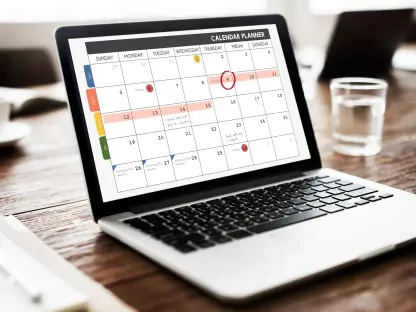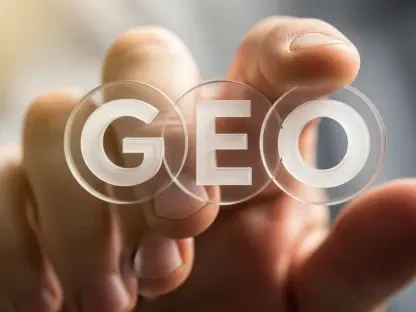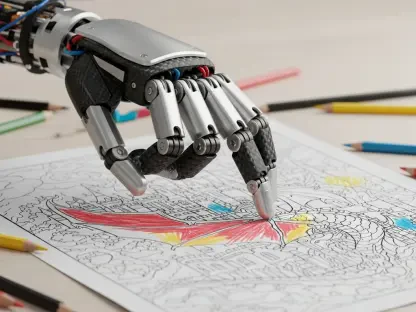Anastasia Braitsik is a global leader in SEO, content marketing, and data analytics. With an extensive background in digital marketing, she has seen the transformation in advertising technologies firsthand. Today, she shares in-depth insights into the current landscape and future of Digital Out of Home (DOOH) advertising, programmatic technology, and the innovative edges reshaping the industry.
Can you explain what trends are currently shaping the Digital Out of Home (DOOH) advertising space?
The trends driving DOOH today are dynamic and reflect broader shifts in media consumption. We’re seeing DOOH evolve due to the fragmentation of traditional broadcast channels. As linear TV viewership declines among younger demographics, DOOH is filling the gap by offering robust reach in high-traffic environments. The integration of programmatic technology has also made DOOH more adaptable and precise, facilitating better targeting and real-time adjustments. Sustainability is another key trend, with programmatic DOOH demonstrating a lower carbon footprint compared to other digital channels, resonating well with eco-conscious brands and consumers.
How has DOOH evolved since VIOOH’s launch in 2018? What do you believe are the main reasons for this evolution?
Since VIOOH’s inception in 2018, DOOH has seen significant growth in screen deployments and technological advancements. The primary factors for this evolution include the increasing integration of DOOH into broader marketing strategies, the rise of programmatic buying, and the growing consumer expectation for personalized and contextually relevant advertising. The industry’s shift towards sustainability has further driven innovation, with DOOH offering a more environmentally friendly option compared to traditional digital advertising methods.
What role does programmatic technology play in the growth of DOOH? How does programmatic buying enhance targeting capabilities for advertisers?
Programmatic technology is central to DOOH’s growth by automating the buying process, improving efficiency, and enabling precise targeting. Programmatic buying leverages data to deliver ads to the right audience at the right times. It allows for real-time bidding and adjustments based on performance metrics, which enhances the precision and impact of campaigns. This level of granularity ensures that messages are not only more relevant but also more engaging for consumers exposed to them.
Can you discuss the regional differences in DOOH across Europe, the US, APAC, and LATAM? Why do these differences exist, and how do they impact market strategies?
Regional differences in DOOH are shaped by various factors including market maturity, regulatory environments, and cultural attitudes towards advertising. For instance, the US leads in adopting Dynamic Creative Optimization, leveraging advanced data-driven creative strategies, while Europe shows a preference for programmatic guaranteed deals. In APAC, fragmented markets require more adaptable strategies, and in LATAM, managed services for Demand Side Platforms are prevalent. These differences necessitate tailored strategies for each region, impacting how agencies approach DOOH planning and execution.
How does DOOH fit within a brand’s overall digital ad strategy? What unique advantages does DOOH offer compared to other digital channels?
DOOH seamlessly integrates into a brand’s digital ad strategy by acting as a powerful broadcast medium that complements other digital channels. Unlike mobile or desktop ads, DOOH delivers large-scale messages in public spaces, enhancing brand visibility. It avoids common digital pitfalls like ad blockers and bot traffic, offering a brand-safe environment. DOOH’s ability to deliver targeted messages based on location and context provides a unique advantage, making it an essential part of a holistic digital strategy.
What are the biggest hurdles facing the DOOH category today? How can these hurdles be addressed going forward?
The most significant challenges for DOOH include supply fragmentation and the gap between interest and implementation of innovations like Dynamic Creative Optimization. Fragmentation can be addressed by creating curated deals that aggregate inventory from multiple media owners, simplifying the buying process. Bridging the gap between interest and application involves better education and showcasing successful case studies to illustrate the benefits of DOOH. Standardizing measurement metrics and enhancing data capabilities will also be crucial for overcoming these hurdles.
How does AI and automation improve the efficiency, targeting, and measurement of DOOH campaigns?
AI and automation streamline DOOH campaigns by analyzing vast amounts of data to identify patterns in consumer behavior and optimize targeting. They improve efficiency by forecasting inventory availability and automating bidding processes, ensuring that ads are displayed at the most impactful times. Enhanced targeting and real-time adjustments lead to more precise audience engagement, while AI-driven measurement tools provide deeper insights into campaign performance, enabling more accurate assessments of ROI.
In what ways is VIOOH ensuring visibility, accountability, and fair pricing in the programmatic OOH space? How important is transparency in ensuring successful partnerships?
VIOOH promotes transparency through dedicated partnership managers, independent audits, and a collaborative approach with media owners. Fair pricing and accountability are maintained by providing tailored support, ensuring needs-based access, and preventing data transfers between media owners. Transparency is critical for building trust and successful partnerships. Clear expectations, joint goals, and structured plans foster collaboration and mutual success.
What steps is VIOOH taking to promote sustainability in DOOH?
VIOOH is committed to sustainability by calculating and minimizing its carbon footprint per ad impression. They focus on programmatic technologies that inherently generate fewer carbon emissions compared to open exchanges. Collaborations with sustainability partners like Cedara support ongoing efforts to measure and reduce environmental impact, reinforcing the sustainable nature of programmatic DOOH.
What changes do you anticipate in the DOOH landscape over the next three to five years? What needs to happen for mass adoption of programmatic DOOH to occur?
In the coming years, DOOH will experience more streamlined buying processes and deeper omnichannel integration. The maturation of data capabilities will enhance targeting and measurement, leading to more personalized and effective campaigns. For mass adoption, the industry needs continued investment in data infrastructure, further standardization of metrics, and showcasing the effectiveness of DOOH through successful case studies. Simplifying access to inventory and educating stakeholders about the benefits of programmatic DOOH will also be critical.
What was one of your favorite recent DOOH campaigns, and what made it stand out to you?
One standout campaign is OVO Energy’s ‘Power Move’ in the UK, designed to run during the greenest energy moments of the day. By linking the Greener Grid API to programmatic buying technology, the campaign ensured the lowest carbon footprint, highlighting the synergy between innovative technology and sustainability. The clear message and environmentally conscious approach made this campaign truly impactful.
Looking ahead, what do you foresee as a game-changing innovation for DOOH in the next decade? Why do you believe this innovation will be transformative?
The next game-changing innovation will be the full integration of programmatic DOOH within broader digital strategies. This involves seamless real-time activation, measurement, and optimization of DOOH alongside other digital channels, enabling cohesive consumer journeys. Such integration promises more sophisticated targeting, effective sequential messaging, and a unified approach to advertising that maximizes engagement and ROI. This transformative innovation will redefine how brands connect with audiences across physical and digital landscapes.









